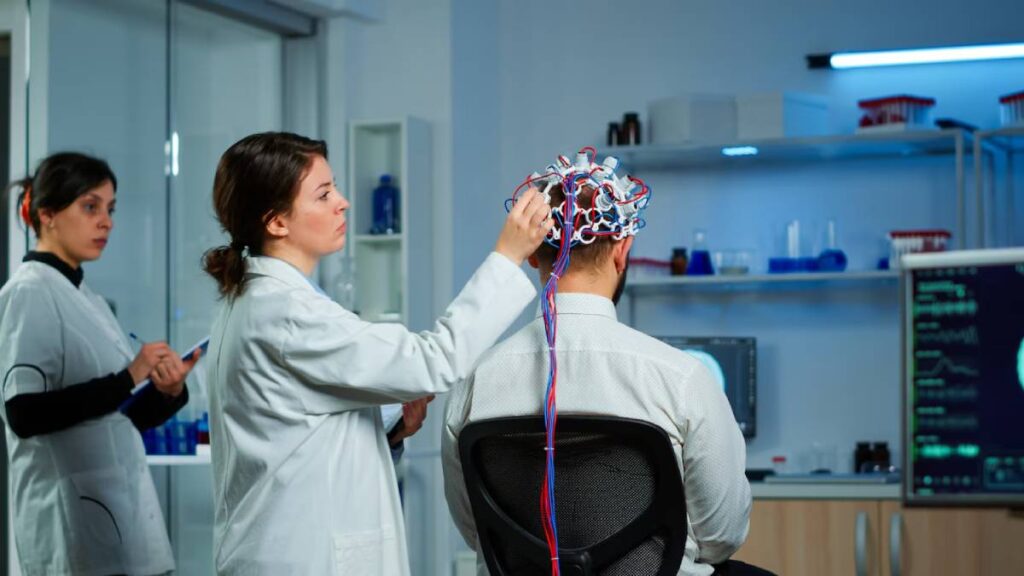The Science Blog

The Science of Neuroplasticity: How Our Brains Adapt
Rewiring the Human Brain
Think about your brain rewiring itself like a smart system. It updates and upgrades based on what you go through. It turns out it can. Welcome to the amazing world of neuroplasticity. This is the brain’s ability to change and grow throughout your life.
Once believed to be fixed after early childhood, neuroscience now shows that the brain is far more flexible. Brain adaptation is key, whether you’re recovering from a stroke, learning a new language, or developing new habits. This article explores neuroplasticity. It looks at how it works, its real-world uses, and new findings in neuroscience. These breakthroughs show how our minds can change over time.
In the end, you’ll learn how your brain changes. You’ll also discover ways to use neuroplasticity to boost your thinking, mental health, and well-being.
What is Neuroplasticity?
Definition and Basics
Neuroplasticity, or brain plasticity, is the brain’s ability to change. It does this by forming new neural connections. This process lets neurons change how they act. They adjust to new situations or changes in the environment.
There are two main types:
- Functional plasticity: The brain’s ability to move functions from a damaged area to an undamaged one.
- Structural plasticity: The brain’s ability to physically change its structure in response to learning or experience.
A Brief Historical Perspective
For much of the 20th century, scientists believed the adult brain was static. However, in the 1970s and 1980s, researchers like Michael Merzenich showed a different story. Merzenich’s experiments demonstrated that the adult brain could indeed reorganise itself.
Neuroplasticity is a key part of modern neuroscience. It helps us understand how we learn, adapt, and recover.

How Neuroplasticity Works
Neurons and Synapses
The brain contains approximately 86 billion neurons, connected by trillions of synapses. Neuroplasticity happens when connections change. They can strengthen, weaken, or form new pathways.
The Role of Experience
Experiences, both positive and negative, play a huge role in shaping the brain. Learning to play an instrument, for instance, strengthens certain neural circuits. Trauma can cause maladaptive plasticity. This means it can strengthen harmful behaviours or thought patterns.
Repetition and Practice
Studies show that repetition solidifies new pathways. This is why consistent practice is key to mastering any new skill—be it playing chess, meditating, or learning a foreign language.
Factors That Influence Neuroplasticity
Age
While neuroplasticity is strongest in childhood, it continues into adulthood—albeit at a slower pace.
Environment
A stimulating environment with opportunities for learning enhances brain plasticity.
Physical Activity
Regular exercise boosts blood flow to the brain and supports neurogenesis (the growth of new neurons).
Sleep and Nutrition
Quality sleep and a nutrient-rich diet are critical for maintaining and supporting plastic changes in the brain.
Mental Health
Chronic stress and depression can inhibit plasticity. Mindfulness and positive mental habits can enhance it.
Real-World Applications of Neuroplasticity
Stroke Rehabilitation
Patients recovering from strokes often regain function with targeted therapy. This type of therapy helps healthy brain areas take over the lost functions.
Case Study: A study in Neurorehabilitation and Neural Repair found that intensive physical therapy helped stroke patients. It improved their motor skills by boosting brain plasticity.

Language Learning
Polyglots often show greater grey matter density in regions associated with language processing. This suggests that learning multiple languages actively reshapes the brain.
Meditation and Mindfulness
MRI scans show that regular meditation boosts grey matter in areas tied to memory, empathy, and stress control.
Cognitive Therapy
Cognitive behavioural therapy (CBT) uses neuroplasticity. It helps people change negative thoughts, rewiring their mental patterns.
Tech-Assisted Learning
Brain-training apps and neurofeedback tools are more popular now. They help improve memory, focus, and learning by taking advantage of brain plasticity.
Neuroscience Breakthroughs Fueling Our Understanding
Brain Mapping Advances
Techniques such as fMRI and EEG let researchers see the brain at work. This helps them track real-time changes in brain plasticity.
Artificial Intelligence and the Brain
AI models inspired by neural networks are providing insights into how learning and memory may work in the brain. Conversely, studying neuroplasticity also informs AI development.
Neuroprosthetics
Devices that interface with the brain—such as cochlear implants or robotic limbs—rely on the brain’s adaptability to learn how to use them.
Psychedelic Research
New research shows that psychedelics might boost neuroplasticity. This could lead to new ways to treat depression and PTSD.
Challenges and Ethical Considerations
Maladaptive Plasticity
Not all changes are beneficial. Addiction, chronic pain, and anxiety disorders can happen when harmful neural pathways are reinforced.
Accessibility
Access to neuroplasticity-based therapies is still uneven. Cost, location, and education can create disparities in who benefits.
Ethical Use of Technology
Neuroenhancement through tech or pharmaceuticals raises questions about fairness, consent, and long-term impacts.

How to Harness Neuroplasticity in Daily Life
Practical Tips
- Keep learning: Pick up a new skill or hobby regularly.
- Exercise regularly: Physical movement enhances brain flexibility.
- Get quality sleep: Essential for memory consolidation and neural growth.
- Practise mindfulness: Meditation supports mental clarity and focus.
- Challenge your routine: Even small changes can stimulate new pathways.
Building a Brain-Friendly Lifestyle
- Nutrition: Omega-3s, antioxidants, and a balanced diet support cognitive health.
- Social interaction: Engaging with others enhances emotional regulation and empathy.
- Limiting screen time: Helps reduce cognitive fatigue and improve attention span.
Conclusion: Embracing the Adaptive Mind
The brain’s ability to adapt is nothing short of extraordinary. From recovery after injury to the mastery of new skills, neuroplasticity is the engine behind human resilience and growth. Neuroscience is evolving, and so is our understanding of this phenomenon. This brings new tools for healing, learning, and improving mental well-being.
You don’t need to be a neuroscientist to benefit from neuroplasticity. With the right habits, mindset, and knowledge, anyone can shape their brain for the better. So, start today: learn something new, move your body, and feed your mind with purpose.
If this article inspired you, share it with others looking to grow, adapt, and thrive. Join our newsletter for brain-boosting tips and the latest in neuroscience.









